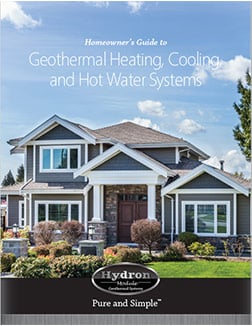Who doesn’t want to enjoy generous tax breaks for geothermal heating and cooling, lower monthly utility bills, chart-topping efficiency, and superb air quality?
THE GEOTHERMAL DIFFERENCE AND THE KEY TO MAKING IT WORK
If you’re used to a gas furnace that labors to keep up with fluctuating temperatures, the relative ease of a geothermal system may surprise you.
You’re probably familiar with the powerful kick from traditional gas systems and their roar as they cycle on to turn temperatures into something you can live with—the greater the fluctuation of outdoor temperatures, the more your hard-working furnace cycles on and off.
In contrast, geothermal systems use naturally stored energy from below the ground to heat your home or business. Read more about how geothermal works here. The Earth’s temperature below the frost line is consistently warm year-round, and many geothermal homeowners use the “set it and forget it” approach to their thermostats.
Proper sizing of a geothermal system, however, is key.
- Systems with too much capacity create inefficiencies.
- Systems with too little capacity won’t deliver the comfort your space requires.

RIGHT-SIZING OF ABOVE- AND BELOW-GROUND Geothermal COMPONENTS
Part of a geothermal system works below ground, and part works above ground. The heat pump, the above-ground part of the system, circulates fluid (usually water) through the underground portion of the system, a series of pipes called a loop. During heating, the loop gathers heat which is distributed through your building. During cooling, heat is removed from your building and distributed into the earth through the loop. The heat pump and loop both need to be the right size to work most efficiently.
Above Ground: A right-sized heat pump –A correctly sized heat pump will keep you comfortable on the coldest and warmest days of the year and offer the best possible efficiency in the system. Sizing for a heat pump is measured by the amount of air it is capable of heating and cooling. It may be surprising, but that measurement is marked in tons of air! Yep, air can be measured by weight! Because it's so important to get it right, we offer heat pumps in half-ton sizes starting as low as ½ ton.
An undersized heat pump may work hard yet not achieve the desired temperature. All that hard work can tax its components and shorten its lifespan.
On the other hand, an oversized heat pump will cycle on and off frequently. These short but frequent cycles use excess electricity and can be too short to dehumidify your living space properly. They also shorten the heat pump’s lifespan.
Factors that affect the right size for a heat pump include your building’s size, insulation, and climate zone.
Below Ground: A right-sized loop – A heat pump can only re-distribute as much heat as the loop can handle. In the same installation location, a 1-ton heat pump requires a smaller loop than a 2-ton heat pump. That means that a properly-sized loop is essential to the efficiency and capability of the entire system.
In the way that an undersized heat pump may keep the system from reaching your desired indoor temperature, an undersized loop can have the same effect. An undersized loop can result in insufficient heat distribution, higher energy bills, and premature failure of its companion heat pump.
An oversized loop field adds expense with little benefit.
Factors that ensure a right-sized loop field include the size of your heat pump, your property’s soil conditions, and your overall climate.
A home with a more significant heating and cooling load requires a larger-capacity heat pump and a larger ground loop.
HELP GETTING THE SIZE RIGHT
The Rocky Mountain Institute calls geothermal heat pumps “a practical solution for cold climates.” They cite bold goals for cold-weather states like Massachusetts and Maine to see more residential installations of geothermal systems. The right sizing will play a part in each installation for homeowners to realize the fullest benefits.
A trusted HVAC contractor can answer your questions about correctly sizing heat pumps and loop fields. Here at Enertech, we can connect you to a trusted professional HVAC contractor who will assess your needs, take critical measurements, and make recommendations to ensure your comfort for many years to come. Contact us today for assistance.


